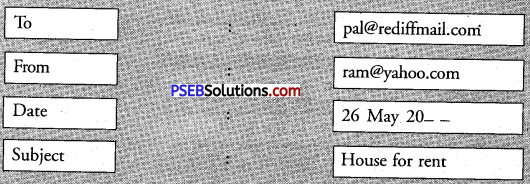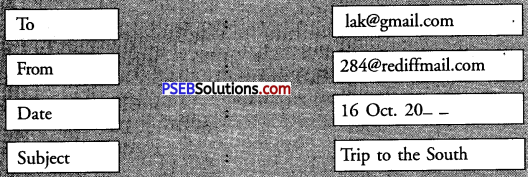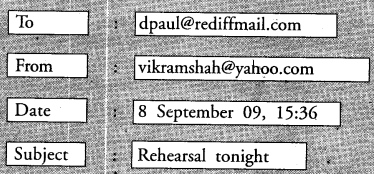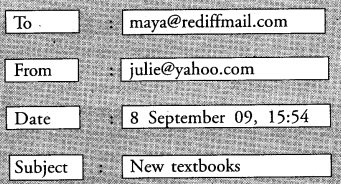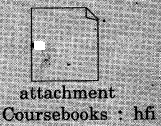Punjab State Board PSEB 7th Class Hindi Book Solutions Chapter 12 चन्द्रशेखर आज़ाद Textbook Exercise Questions and Answers.
PSEB Solutions for Class 7 Hindi Chapter 12 चन्द्रशेखर आज़ाद
Hindi Guide for Class 7 PSEB चन्द्रशेखर आज़ाद Textbook Questions and Answers
(क) भाषा-बोध
1. शब्दार्थ:
खून खौलना = क्रोधित होना
कर्मी = कर्मचारी
संगठनकर्ता – संगठन करने वाला
महासंग्राम = बड़ा युद्ध
अभियोग = मुकद्दमा
नफ़रत – घृणा
विश्वासघात = धोखा
अध्ययन = पढ़ाई
स्वाधीनता = आज़ादी
दहशत = भय, डर
यकीन = विश्वास
प्रण = प्रतिज्ञा
सदैव = सदा
नमन = नमस्कार, प्रणाम
अधीक्षक = सुपरिंटेंडेंट
2. इन शब्दों में से उपसर्ग छाँटकर लिखें:
अनाथ = _____________
अत्याचार = _____________
अभियोग = _____________
निर्ममता = _____________
प्रहार = _____________
निराशा = _____________
परिवार = _____________
उत्तर:
अ, अति, अभि, निर्, प्र, निर्, परि।
![]()
3. इन मुहावरों को इस तरह वाक्यों में प्रयोग करें ताकि उनके अर्थ स्पष्ट हो जाएं:
खून खौल उठना ______________ ___________________
जान हथेली पर रखना____________ __________________
थर-थर काँपना ____________ __________________
ठान लेना ______________ ____________________
सिरदर्द बनना _______________ ___________________
वीरगति को प्राप्त होना ______________ ___________________
उत्तर:
किसी पर अत्याचार होते देखकर आज़ाद का खून खौल उठता था।
क्रांतिकारी जान हथेली पर रखकर आजादी की लड़ाई लड़ते थे।
श्रीनगर में इतनी ठंड पड़ रही थी कि लोग थर-थर काँपने लगे।
अनीश ने परीक्षा में प्रथम स्थान प्राप्त करने की ठान ली है।
पड़ोसन की रोज़-रोज़ की किचकिच सुनीता का सिरदर्द बन गई है।
शत्रु पक्ष से युद्ध करते हुए मेजर जसवंत सिंह वीर गति को प्राप्त हुए।
4. निम्नलिखित शब्दों के प्रत्यय अलग करके लिखें:
गुलामी = ___________
आज़ादी = ___________
क्रांतिकारी = ___________
स्वतंत्रता = ___________
भारतीय = ___________
धोखेबाज = ___________
देखकर = ___________
खोया = ___________
उत्तर:
ई, ई, कारी, ता, ईय, बाज, कर, या।।
5. निर्देशानुसार शब्द भरकर वाक्य पूरे करें :
- चन्द्रशेखर आज़ाद ………….. (विशेषण) और ……….. (विशेषण) थे।
- …………. (व्यक्तिवाचक संज्ञा) 15 अगस्त, 1947 को अंग्रेज़ों की (भाववाचक संज्ञा) से आज़ाद हुआ।
- ………… (सर्वनाम) अपनी प्रारम्भिक शिक्षा गाँव की ………………. (जातिवाचक संज्ञा) से प्राप्त की।
- मजिस्ट्रेट बहुत ही …………. (विशेषण) स्वभाव वाला था।
- चन्द्रशेखर अपने ……………. (अधिकरण कारक) चंदन का ……….. (कर्म कारक) लगाते थे।
उत्तर:
- चन्द्रशेखर आज़ाद वीर और साहसी थे।
- भारत 15 अगस्त, सन् 1947 को अंग्रेज़ों की गुलामी से आज़ाद हुआ।
- उन्होंने अपनी प्रारम्भिक शिक्षा गाँव की पाठशाला से प्राप्त की।
- मजिस्ट्रेट बहुत ही कठोर स्वभाव वाला था।
- चन्द्रशेखर अपने माथे पर चंदन का टीका लगाते थे।
6. विपरीत शब्द लिखें:
स्वतंत्रता = ……………………
नफरत = …………………
कठोर = …………………
निडरता = …………………..
सज़ा = …………………
बचाना = …………………
जीवित = ………………..
सपूत = …………………
विश्वासघात = …………………..
उत्तर:
शब्द विपरीत शब्द
स्वतंत्रता = परतंत्रता
नफरत = प्यार
कठोर = कोमल
निडरता = कायरता
सज़ा = इनाम/पुरस्कार
बचाना = मारना
जीवित = मृत
सपूत = कपूत
विश्वासघात = विश्वासपात्र
![]()
(ख) विचार बोध
इन प्रश्नों के उत्तर एक या दो वाक्यों में लिखें:
प्रश्न 1.
चन्द्रशेखर आज़ाद का जन्म कहाँ हुआ ?
उत्तर:
चन्द्रशेखर आजाद का जन्म मध्यप्रदेश के जिला झाबुआ के गाँव भाँवरा में हुआ था।
प्रश्न 2.
चन्द्रशेखर के माता-पिता का क्या नाम था ?
उत्तर:
चन्द्रशेखर की माता का नाम जगरानी देवी तथा पिता का नाम पंडित सीताराम तिवारी था।
प्रश्न 3.
मजिस्ट्रेट द्वारा पूछे जाने पर उन्होंने अपना और अपने पिता का नाम तथा घर का पता क्या बताया ?
उत्तर:
मजिस्ट्रेट द्वारा पूछे जाने पर उन्होंने अपना नाम आज़ाद, पिता का नाम स्वतंत्र तथा घर का पता जेलखाना बताया था।
प्रश्न 4.
मजिस्ट्रेट ने चन्द्रशेखर को क्या दंड दिया ?
उत्तर:
मजिस्ट्रेट ने चन्द्रशेखर को पन्द्रह बेंतें लगाने का दंड दिया।
प्रश्न 5.
रामप्रसाद बिस्मिल को जब फाँसी हुई तो उनके मुँह से क्या निकला ?
उत्तर:
रामप्रसाद बिस्मिल को जब फाँसी हुई तो उन्होंने कहा
‘शहीदों की चित्ताओं पर लगेंगे हर बरस मेले
वतन पर मरने वालों का यही बाकी निशां होगा।
प्रश्न 6.
सरदार भगत सिंह और बटुकेश्वर दत्त ने केन्द्रीय विधानसभा में बम कब फेंका ?
उत्तर:
सरदार भगत सिंह और बटुकेश्वर दत्त ने केन्द्रीय विधान सभा में बम 8 अप्रैल, 1929 ई० को फेंका था।
प्रश्न 7.
चन्द्रशेखर आजाद कब शहीद हुए ?
उत्तर:
चन्द्रशेखर आज़ाद 27 जनवरी, सन् 1931 ई० को शहीद हुए थे।
2. इन प्रश्नों के उत्तर चार या पाँच वाक्यों में लिखें :
प्रश्न 1.
चन्द्रशेखर ने पुलिस कर्मी के माथे पर पत्थर क्यों मारा था?
उत्तर:
चन्द्रशेखर ने एक दिन देखा कि अंग्रेज़ी शासन के पुलिस वाले स्वतंत्रता के लिए आन्दोलन करने वालों पर बेरहमी से डंडे बरसा रहे हैं और उन्हें घसीट रहे हैं। उन्हें पुलिस का आंदोलनकारियों पर यह अत्याचार बर्दाश्त नहीं हुआ। उन्होंने एक पुलिस अधिकारी के माथे पर पत्थर मार कर उसे लहूलुहान कर दिया था।
प्रश्न 2.
चन्द्रशेखर को चन्द्रशेखर आज़ाद क्यों कहा जाता है ?
उत्तर:
पुलिस अधिकारी को पत्थर मारकर लहूलुहान करने के अपराध में चन्द्रशेखर को पकड़ कर मजिस्ट्रेट के सामने पेश किया था। जब उसने इनसे इनका नाम आदि पूछा तो इन्होंने उत्तर दिया कि मेरा नाम आज़ाद, पिता का नाम स्वतंत्र तथा घर का पता जेलखाना है। इस से मजिस्ट्रेट ने इन्हें पन्द्रह बेंतें मारने की सजा सुनाई, जिसे इन्होंने ‘वन्दे मातरम्’ तथा ‘भारत माता की जय’ कहते हुए स्वीकार कर लिया। जब ये जेल से बाहर आए तो लोगों ने इन्हें चन्द्रशेखर आज़ाद कहना शुरू कर दिया।
प्रश्न 3.
चन्द्रशेखर एक कुशल संगठनकर्ता थे। कैसे ?
उत्तर:
चन्द्रशेखर आज़ाद एक कुशल संगठनकर्ता भी थे। इसके लिए उन्होंने अंग्रेज़ी अत्याचारों के विरुद्ध गुप्त तरीके से परचे छपवाकर मंदिरों, मस्जिदों, स्कूलों, कार्यालयों आदि में बाँटे, जिससे प्रभावित होकर लोग इनसे जुड़ने लगे और इनका एक बहुत बड़ा क्रांतिकारियों का दल तैयार हो गया, जो जान हथेली पर रख कर स्वतंत्रता-संग्राम में जूझने के लिए तैयार रहते थे।
प्रश्न 4.
भगतसिंह तथा बटुकेश्वर दत्त ने विधानसभा में बम क्यों फेंका?
उत्तर:
अंग्रेज़ सरकार की गलत नीतियों के विरोध में सरदार भगत सिंह और बटुकेश्वर दत्त ने 8 अप्रैल, 1929 ई० को केन्द्रीय विधानसभा में बम फेंका और ‘इन्कलाब जिन्दाबाद’ का नारा लगाते हुए अपनी गिरफ्तारी भी दी जिस कारण सरकार ने भगतसिंह, राजगुरु और सुखदेव को फाँसी दी थी तथा बटुकेश्वर दत्त को काले पानी की सज़ा।
प्रश्न 5.
चन्द्रशेखर के जीवन से आपको क्या प्रेरणा मिलती है ?
उत्तर:
चन्द्रशेखर आज़ाद के जीवन से हमें यह शिक्षा मिलती है कि हमें अपने देश की रक्षा के लिए बलिदान देने के लिए सदा तैयार रहना चाहिए। हमें किसी भी स्थिति से घबराना नहीं चाहिए तथा वीरता और साहस के साथ हर संकट का सामना करना चाहिए। मित्रों की पहचान सोच-समझ कर करनी चाहिए तथा विश्वासघाती मित्रों से सावधान रहना चाहिए।
(ग) रचना बोध
चन्द्रशेखर आजाद की जीवनी पुस्तकालय से लेकर पढ़ें।
मातृभूमि के लिए शहीद होने वाले अन्य देश भक्तों के बारे में पता करें ।
नोट:
अपने-अपने अध्यापक/अध्यापिका की सहायता से स्वयं कीजिए।
![]()
PSEB 7th Class Hindi Guide चन्द्रशेखर आज़ाद Important Questions and Answers
1. निम्नलिखित प्रश्नों के उत्तर उचित विकल्प चुनकर लिखिए
प्रश्न 1.
भारत कब आज़ाद हुआ था ?
(क) 15 अगस्त, 1947
(ख) 26 जनवरी, 1950
(ग) 14 अगस्त, 1950
(घ) 2 अक्तूबर, 1947
उत्तर:
(क) 15 अगस्त, 1947
प्रश्न 2.
आजाद का पूरा नाम क्या था?
(क) राम सिंह आज़ाद
(ख) चंद्रशेखर आज़ाद
(ग) महात्मा आज़ाद
(घ) सावारकर
उत्तर:
(ख) चंद्रशेखर आजाद
प्रश्न 3.
चंद्रशेखर आजाद का जन्म मध्यप्रदेश के किस जिले में हुआ था ?
(क) बबुआ
(ख) तेबुआ
(ग) झाबुआ
(घ) कोई नहीं
उत्तर:
(ग) झाबुआ
प्रश्न 4.
महिर्ष वेदव्यास ने ……….को सबसे बड़ा पुण्य माना है।
(क) परपीड़ा
(ख) स्वार्थ
(ग) झूठ
(घ) परोपकार
उत्तर:
(घ) परोपकार
प्रश्न 5.
………. ने असुरों का नाश करने के लिए अपना शरीर दान दे दिया था।
(क) महर्षि दधीचि
(ख) कर्ण
(ग) अर्जुन
(घ) रावण
उत्तर:
(क) महिर्ष दधीचि
प्रश्न 6.
दूसरों को ………….सबसे बड़ा पाप है।
(क) सुख देना
(ख) कष्ट देना
(ग) किताब
(घ) कलम
उत्तर:
(ख) कष्ट देना
प्रश्न 7.
परोपकारी व्यक्ति सदा ………… से सबका भला करता है।
(क) उदारता
(ख) अज्ञानता
(ग) स्वार्थ
(घ) कलम
उत्तर:
(क) उदारता
3. दिए गए शब्द का सही अर्थ से मिलान कीजिए
प्रश्न 1.
परोपकार:
दया
ईष्या
संघर्ष
उत्तर:
दया।
प्रश्न 2.
बेंत:
डण्डा
बातें
बकवास
उत्तर:
डण्डा
प्रश्न 3.
चाह:
चमन
इच्छा
चाचा
उत्तर:
इच्छा।
प्रश्न 4.
प्रण:
प्रतिज्ञा
प्राण
प्रणिता
उत्तर:
प्रतिज्ञा।
चन्द्रशेरवर आज़ाद Summary
चन्द्रशेरवर आज़ाद पाठ का सार
‘चन्द्रशेखर आज़ाद’ पाठ में लेखक ने भारत माता के वीर सपूत क्रांतिकारी स्वतन्त्रता सेनानी चन्द्रशेखर आजाद के जीवन की कुछ घटनाएँ प्रस्तुत करते हुए, उनके चरित्र से देशभक्ति की प्रेरणा लेने का संदेश दिया है। भारत 15 अगस्त, सन् 1947 ई० को अंग्रेजों की गुलामी से आज़ाद हुआ था, जिसे पाने के लिए अनेक स्वतंत्रता सेनानियों ने अपना बलिदान दिया था। इनमें चन्द्रशेखर आजाद का नाम प्रमुख है। इनका जन्म मध्यप्रदेश के झबुआ जिले के भाँवरा गाँव में हुआ था। इनके पिता पंडित सीता राम तिवारी तथा माता का नाम जगरानी देवी था। इन्होंने प्रारंभिक शिक्षा गाँव की पाठशाला में प्राप्त की तथा संस्कृत का अध्ययन बनारस में किया। चौदह वर्ष की आयु में ही अंग्रेज़ों के अत्याचारों के समाचार पढ़ कर इनका खून खौल उठता था। वे देश प्रेम की भावना से भरकर देश को आज़ाद कराने के लिए तड़पने लगे।
एक दिन अंग्रेजों के पुलिसकर्मियों द्वारा स्वतंत्रता के लिए आन्दोलन करने वालों को बेरहमी से पीटा और घसीटा देखकर इन्होंने एक पुलिस अधिकारी के माथे पर पत्थर दे मारा। वह लहूलुहान हो गया। ये वहाँ से भाग गए परन्तु एक पुलिस कर्मी ने इनके मस्तक पर चंदन का टीका लगा होने से पहचान कर इनके घर से इन्हें पकड़वा दिया। इन पर मुकद्दमा चला तो इन्होंने अपना नाम आजाद, पिता का नाम स्वतंत्र तथा घर का पता जेलखाना बताया। इस पर क्रोधित होकर मैजिस्ट्रेट ने इन्हें पन्द्रह बेंतें मारने का दंड दिया, जिसे इन्होंने ‘वन्दे मातरम्’ तथा ‘भारत माता की जय’ के नारे लगाते हुए स्वीकार किया।
इन्होंने अंग्रेज़ी सरकार के विरुद्ध गुप्त रूप से परचे बांटे। इनका एक क्रांतिकारी दल बन गया था, जिसने 9 अगस्त, सन् 1945 ई० को लखनऊ के नज़दीक काकोरी में ट्रेन रोक कर एक सरकारी खज़ाना लूट लिया था। इन के साथी अशफाकउल्ला, राम प्रसाद बिस्मिल, राजेन्द्र लाहिड़ी और रोशन सिंह को इस काम में शामिल होने के कारण फांसी दे दी गई थी। ये झांसी के पास ढिकनपुरा गाँव के जंगलों में ब्रह्मचारी के वेश में हरिशंकर नाम से रहने लगे। देश को स्वतंत्र कराने की चाह लिए वे वीर सावरकर और सरदार भगतसिंह से भी मिले थे। जब साइमन कमीशन के विरोध में लाला लाजपतराय शहीद हुए तो इनका बदला लेने के लिए उन्होंने भगत सिंह, राजगुरु तथा जयगोपाल के साथ पुलिस अधीक्षक स्कॉट को मारने की योजना बनाई परन्तु मारा सहायक पुलिस अधीक्षक सांडर्स गया। इसके पुलिस ने क्रांतिकारों की धरपकड़ शुरू कर दी। भगत सिंह और बटुकेश्वर दत्त ने 8 अप्रैल, सन् 1929 ई० को केन्द्रीय विधानसभा में बम फेंका और ‘इन्कलाब जिंदाबाद’ कहते हुए अपनी गिरफ्तारी दी। बाद में भगतसिंह, राजगुरु और सुखदेव पर आरोप लगा पुस्तकीय भाग कर फाँसी दे दी गई तथा बटुकेश्वर दत्त को कालेपानी की सज़ा, चन्द्रशेखर आजाद अभी पकड़े नहीं गए थे।
पुलिस आज़ाद को पकड़ने के लिए उनके एक साथी तिवारी को लालच देकर अपने साथ मिला लेती है और तिवारी आज़ाद के साथ धोखा करते हुए उन्हें इलाहाबाद के अलफ्रेड फार्म ले जाता है, जहां पुलिस 27 जनवरी, सन् 1931 को आज़ाद को पकड़ना चाहती है परन्तु वे तिवारी को वहाँ से भगा कर स्वयं पुलिस का मुकाबला करते हुए शहीद हो जाते हैं। वे अपने इस प्रण को पूरा करते हैं कि उनके जीवित होते हुए उन्हें कोई छू भी नहीं सकता। देश सदा उन को स्मरण करते हुए नमस्कार करता है।

